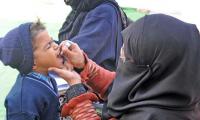The population of Pakistan rapidly aging. This trend has unique challenges and opportunities for the country even be it a world-wide phenomenon. During the past decade, life expectancy in Pakistan has risen steadily. The developments in healthcare, sanitation and the provision of food have played a big part in this change. This is a good thing and it alludes to more people being healthier. But there is a silver lining that also results in more people living longer. At present, about 7% of Pakistan’s population is 60 or above. That number is expected to nearly double by 2050. This large increase will impact all of society.
The workforce will be heavily affected due to an ageing population. That is compounded by the inheritance system where increasing wealth inequality increases poverty and drives even more people into low-wage work. This puts a strain on social security net and pension plans as well. Also, with a population growing older there is also simply a lot of experience and knowledge about life. Senior citizens are a valuable resource, that could mentor being available for the young to come and still keep working cutting back in retirement or work if they choose not-to.
Senior health has different needs from normal people. Older Individuals have the risk of developing chronic diseases such as diabetes and heart conditions. The increasing demand for specialized care will require Pakistan’s healthcare system to practice and operate accordingly. The need of mental help for the elderly, with dementia and depression are also areas specific to be covered
The Pakistani society has always valued its elders traditionally. Even then, the economic pressures or increasing nuclear family structures may not enable every elderly person to continue being taken care of by their families. And as a result, this may lead to loneliness and isolation for the seniors. This is often due to the demands of urbanization and migration for better opportunities, with younger family members living in higher paying places than their elderly relatives.
The ageing population presents both opportunities and challenges. Preparing for this demographic shift will allow us to capitalize on it and make it a positive force in the nation. Key among the reforms is to bolster social security systems in conjunction with encouraging retirement savings. Senior citizens could easily contribute to the power of creating; by directing them back into employment or volunteerism, acknowledging that they done this before and have experience in it.
Expanding access to geriatric care and promoting healthy ageing practices are essential. This includes preventative measures and public health initiatives that encourage healthy lifestyles throughout life. Furthermore, the construction of age-friendly infrastructure - including public transportation and housing accessibility improvements for elders are also ways to significantly improve elder lives.
Programs that foster intergenerational connections may also be mutually beneficial for both the young and elderly. The youth get some company and support, seniors enjoy a bit of mind sharing. Organised events and activities at community centres and schools can also help to bring people together.
Technological advancements offer additional avenues to support the ageing population. Telemedicine services to deliver healthcare remotely, and without the necessity of a visiting to hospital frequently. Wearable health devices to keep track of their vitals and alert caregivers if there are any emergencies. Activities where seniors can learn about digital literacy skills like how to use the internet and email so they stay in touch with family and friends, which will lower isolation processes.
The fact is that Pakistan has an ageing population. Recognizing the challenges and seizing the opportunities would help shape a future where every generation can succeed. Proactive policies and creative solutions are necessary if we hope to leverage this demographic trend as a force for positive social transformation.
The writer is a student at Aitchison College
Salman Chaudhry, IG, National Highways & Motorway Police pictured on January 15, 2024. — Facebook@National Highways...
A Russian delegation led by Valentina Matvienko, Federation Council of the Russian Federation looks at a painting...
A health worker administers polio drops to a child during the Polio Free Pakistan campaign in Islamabad on October 28,...
Dengue patient under medical treatment in a ward at a Hospital on October 24, 2024. — APPRawalpindi : Dengue fever...
Defence expert Maj Gen Samrez Salik addresses a seminar on October 10, 2023. — Screengrab via...
IWMB officials treat a male leopard rescues from the Azad Jammu and Kashmir region. — APP/FileIslamabad : A male...







